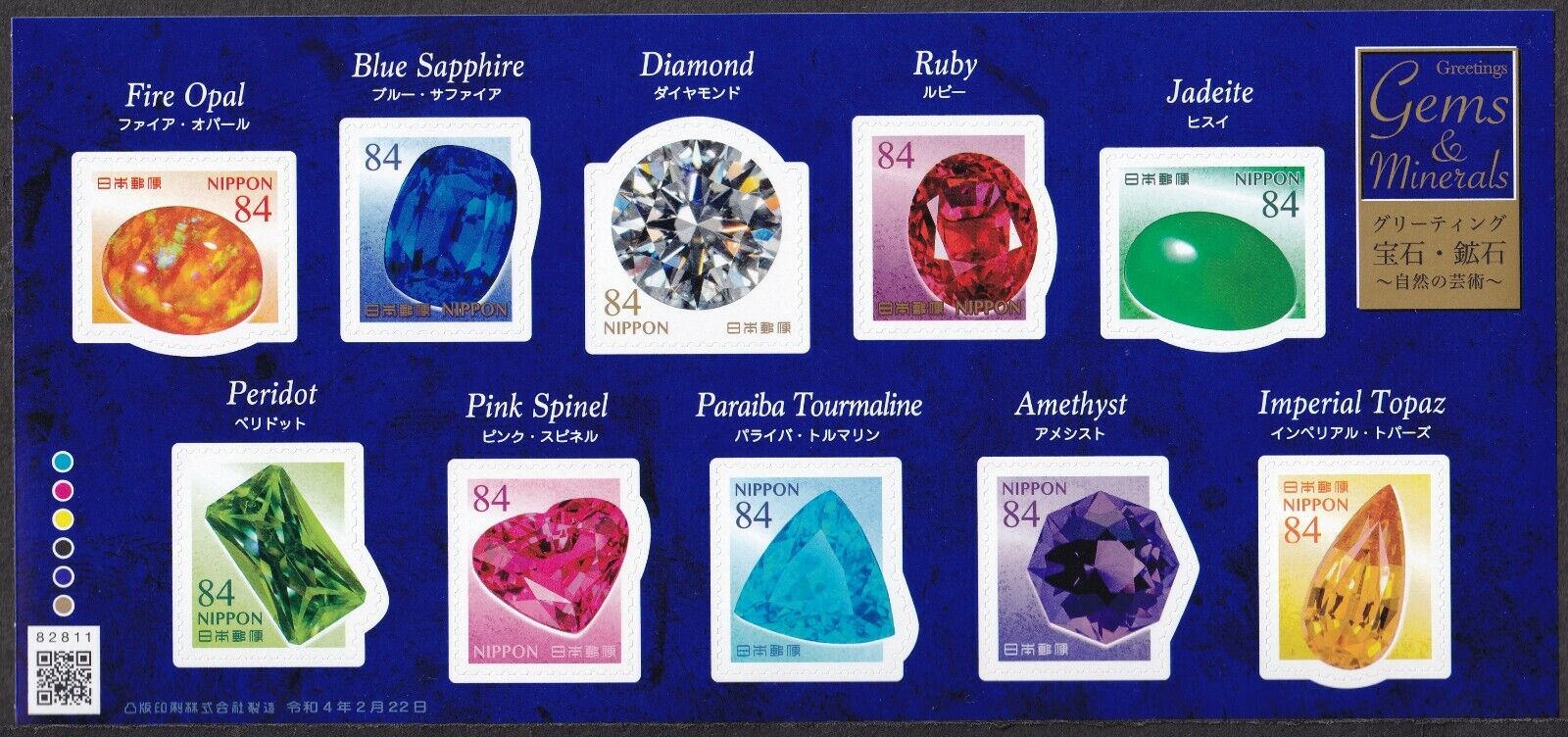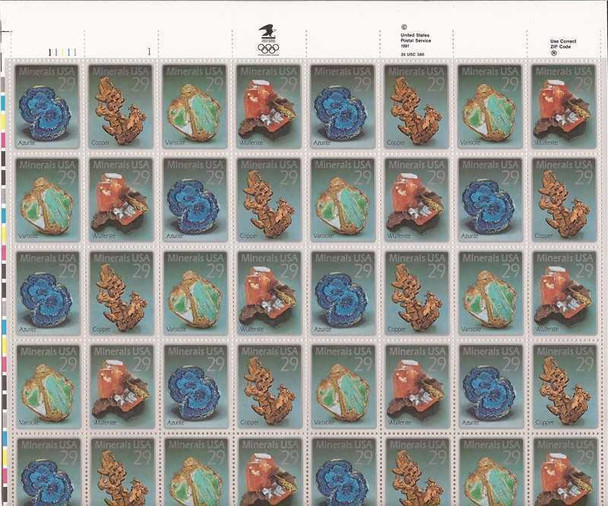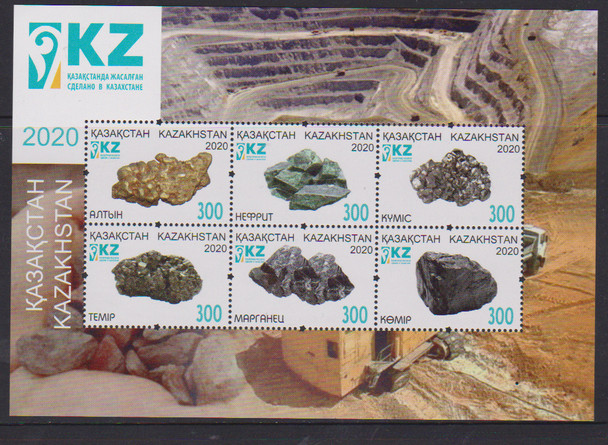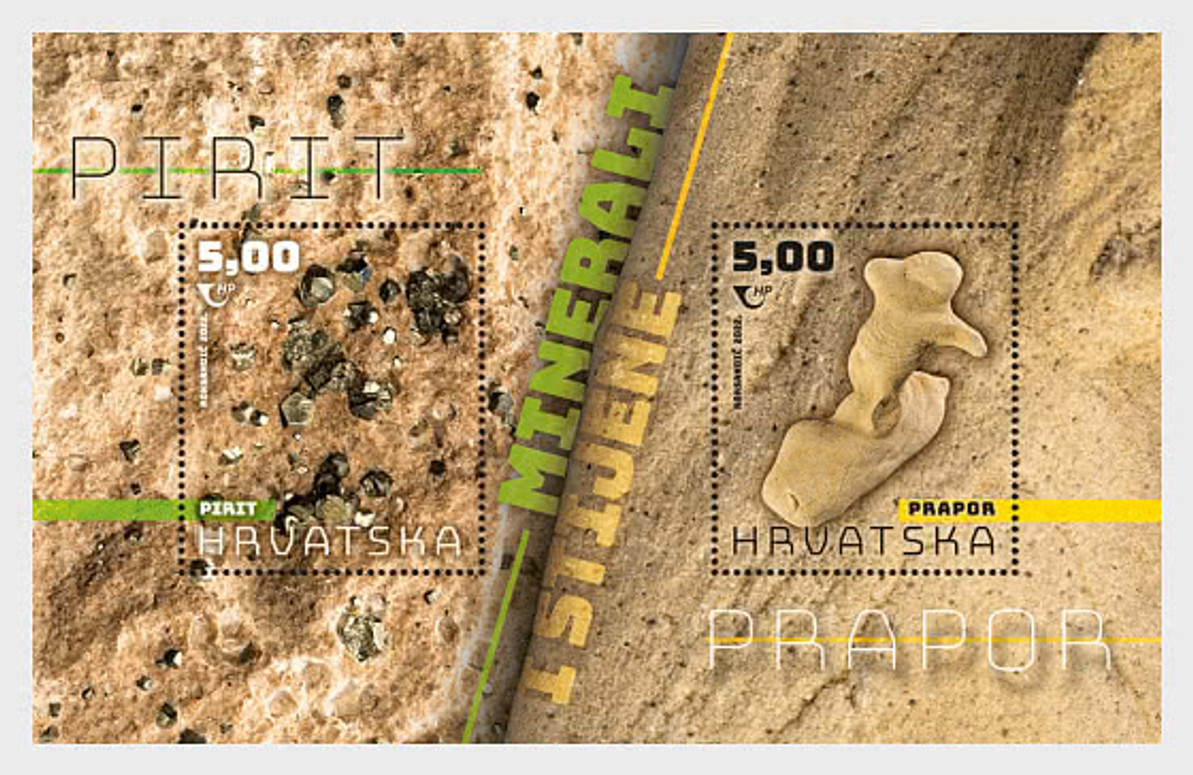COLLECTING MINERALS ON STAMPS...MORE THAN PET ROCKS!
The science that explores the formation and classification of rocks is called petrology An important point to note is that rocks make up the lithosphere – a solid mass of rocks with a thickness of 5 to 70 kilometers, which encompasses the Earth's crust (the solid surface layer of the planet Earth) and the Earth's upper mantle (the thickest layer containing the majority of our planet's material). Just beneath the solid lithosphere lies the central part of the Earth's mantle – the asthenosphere – a layer of molten rock called magma. The lower part of the Earth's mantle maintains a solid state as a result of high pressure and reaches a depth of 2,900 kilometers. Beneath the mantle all the way to the center lies the Earth's core, which is made up mostly of iron.
By their origin, rocks are classified as igneous, sedimentary, and metamorphic. Igneous rocks make up about 95% of the lithosphere, whereas the other two types of rock are only 5% of the lithosphere. In fact, rocks are aggregates of one or more minerals – structures formed by natural physical and chemical processes, with a specific chemical composition and crystal structure, as well as stability under certain temperature and pressure condition.
Many countries have issued stamps to display their mineral wealth (gold mining), diamond industry, and industrial use of minerals. The beauty of crystals has often been displayed on commemorative stamps. While some of these beautiful crystals and gems can cost a fortune for someone seeking actual specimens, collecting the images on stamps provides a much less expensive avenue to own and admire a gem and mineral collection.



Recent Posts
-
US PINBACK FOREVER STAMPS SEND A WHIMISICAL COLORFUL GREETING ON LETTERS
Since their first appearance in 1896, pinback buttons have expressed viewpoints, made statements and …Feb 14th 2025 -
NEW AUSTRIA STAMP PROMOTES CONSERVATION & RECYCLING WITH POSTAL UNIFORMS!!
When a piece of clothing becomes a stamp: in the spirit of sustainability, used Austrian Post unifor …Jan 17th 2025 -
THIS NEW YEAR CHERUB PARTIED HIS WAY ONTO A US STAMP IN 2000!
The "New Year Cherub" is a popular motif often used in holiday decorations, greeting cards, and art. …Jan 3rd 2025




